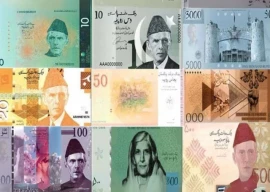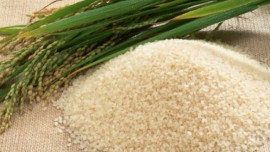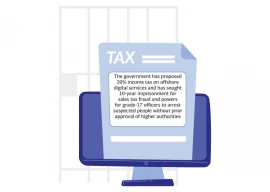
For the second month in a row, Pakistan’s trade deficit multiplied and clocked in at $2.4 billion in April, which was 181% more than the same month of the last year due to dismal performance of exports and an uptick in imports.
The monthly trade bulletin provides insight into how the country’s external trade would fare if imports were unrestricted.
The Pakistan Bureau of Statistics (PBS) reported on Thursday that the gap between exports and imports widened by 181% to $2.4 billion in April compared to a year ago. In absolute terms, the trade deficit increased by $1.6 billion, which is more than half the size of the recently concluded International Monetary Fund (IMF) programme.
The PBS reported that, on a year-on-year basis, in April exports amounted to $2.4 billion, up by $214 million or 10% compared to the same month last year.
Despite benefiting from subsidies for decades, cheaper loans, nearly income-tax-free export earnings, and reduced gas rates, exporters have disappointed with an average monthly export performance of around $2.5 billion.
In contrast, imports surged sharply to $4.7 billion last month, an increase of $1.7 billion or 58%.
This 58% increase in imports within a single month occurred despite strict control over outflows. Pakistan’s normal monthly imports typically ranged between $5.5 billion to $6.5 billion, but due to a shortage of foreign currency, the country has curtailed this.
However, the caretaker government’s decision to permit unlimited wheat imports, despite an expected bumper crop, has come under scrutiny due to its implications for farmers. The central bank allowed an outflow of $1.1 billion to finance the import of 3.5 million tonnes of wheat until the end of March.
This led to a glut in the market, forcing farmers to sell their produce at 13% to 24% below the official minimum rate of Rs3,900 per 40 kg.
Members of the caretaker setup and former Prime Minister Anwaarul Haq Kakar have now publicly started defending their decision. The Federation of Pakistan Chamber of Commerce and Industry (FPCCI), whose members may have benefited from the imports, also issued a statement in defence of the last caretaker government.
Saquib Fayyaz Magoon, an office bearer of the Federation of Pakistan Chambers of Commerce & Industry (FPCCI), claimed that according to government estimates, there was a wheat shortage of 2.5 million tonnes this year, while independent sources placed the shortage at 3 million tonnes. He said this led the Ministry of National Food Security and the Economic Coordination Committee (ECC) of the cabinet to allow the private sector to import wheat without subsidy. The ECC also requested the State Bank of Pakistan (SBP) to open Letters of Credit (LCs) for wheat imports, Magoon added.
Although Magoon defended the interim setup, his statement implicates the caretaker government in allowing wheat imports and facilitating the opening of LCs.
His claim appears contradictory to the facts, as due to the expected surplus wheat, the caretaker government cancelled its decision to import one million metric tonnes of wheat through official channels. Instead, it allowed the private sector to import the commodity, leading to the glut.
PBS data showed that on a month-on-month basis, the trade deficit expanded again due to poor export performance. Exports fell to under $2.4 billion last month, a decrease of 8.7% compared to March. Imports also decreased by over 3% to $4.7 billion.
During the July-April period of this fiscal year, the gap between imports and exports amounted to $19.5 billion, the PBS added. The trade deficit was $4 billion or 17% less than the comparative period of the last fiscal year.
Imports during the first 10 months of this fiscal year remained at $44.8 billion, down by $1.9 billion or 4.1%, according to the national data collecting agency. The reduction in the import bill is gradually slowing down due to a slight easing of import restrictions.
Under the next IMF package, Pakistan may have to completely lift these restrictions, requiring significant external financing.
The PBS stated that exports picked up during the July-April period, totalling $25.2 billion. There was only a $2.1 billion addition in exports in 10 months, showing an increase of nearly 9.1%.
During the first nine months of the current fiscal year, the current account deficit has been narrowed down to $500 million, largely due to import restrictions.
Published in The Express Tribune, May 3rd, 2024.
Like Business on Facebook, follow @TribuneBiz on Twitter to stay informed and join in the conversation.





1737550160-0/BeFunky-collage-(21)1737550160-0-165x106.webp)







1737452260-0/Gaddafi-stadium-(2)1737452260-0-270x192.webp)










COMMENTS
Comments are moderated and generally will be posted if they are on-topic and not abusive.
For more information, please see our Comments FAQ